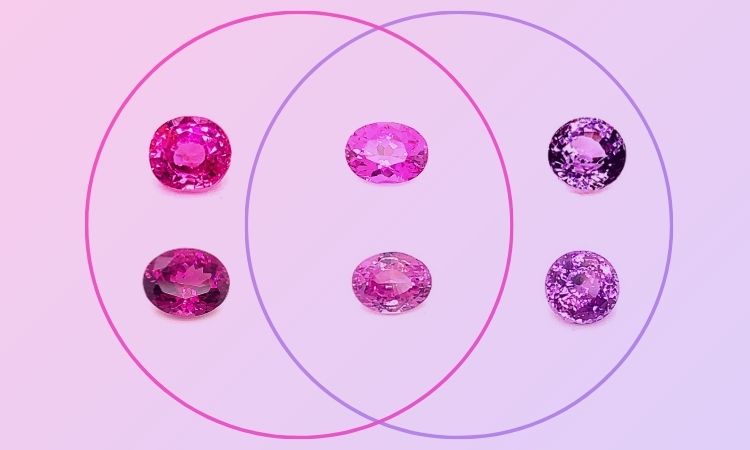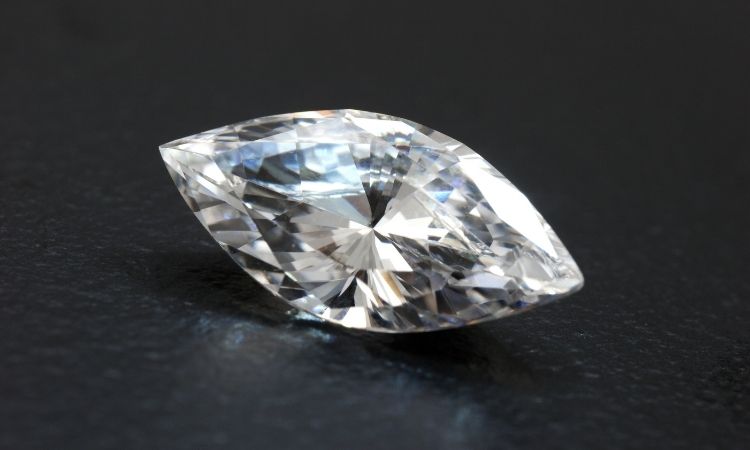When Does a Pink Sapphire Become a Ruby? Expert Guide
When Does a Pink Sapphire Become a Ruby?
Both pink sapphires and rubies dazzle with their rich hues and exceptional durability, but many jewelry lovers wonder: When does a pink sapphire become a ruby? The answer is more complex than it may seem, blending gemology, history, and market trends. In this guide, we’ll explore the fascinating science and business behind these coveted gemstones, helping you understand their differences and what determines their classification.
Understanding the Corundum Family: Sapphires and Rubies
Both rubies and sapphires belong to the corundum mineral family. Corundum is renowned as the second hardest natural mineral after diamond, making it a popular choice for fine jewelry due to its toughness and durability. The corundum family’s versatility is enhanced by a wide range of colors, but only red corundum is called ruby, while all other colors—including blue, yellow, green, and pink—are generally called sapphire.
- Hardness: 9 on the Mohs scale (second only to diamond)
- Durability: Ideal for rings, earrings, necklaces, and everyday wear
- Color variety: Rubies (red), Sapphires (blue, yellow, green, pink, etc.)
What Creates the Red and Pink Colors?
The vibrant colors of rubies and pink sapphires are the result of trace elements within the corundum crystal structure:
- Chromium: The primary ingredient for red hues. Higher chromium levels produce deeper reds.
- Iron: The presence of iron can lighten the red, resulting in pinker shades.
Therefore, the interplay between chromium and iron determines whether a gemstone is classified as a ruby or a pink sapphire. But where is the line drawn?
The Key Difference: Color Intensity
The main distinction between a pink sapphire and a ruby is the intensity and dominance of the red hue. In simple terms:
- Rubies: Exhibit a dominant, vivid red color. They can range from purplish-red to orangey-red but must be predominantly red.
- Pink Sapphires: Feature a lighter, less saturated red, appearing pink or pinkish-red.
How Is the Cutoff Decided?
There is no universal, scientific threshold for where pink ends and red begins. The classification is influenced by:
- Color Saturation: The richer and darker the red, the more likely it is to be considered a ruby.
- Hue Dominance: Stones with a dominant red hue are classified as rubies; those with weaker red or more pinkish hues are pink sapphires.
- Country and Market Tradition: In some countries, stones with even slight red can be called ruby, while others reserve the term for only the deepest reds.
The Global Debate: Ruby or Pink Sapphire?
The distinction between ruby and pink sapphire is not only a gemological issue but also a cultural and commercial debate. Here’s why:
- Historical Perspective: In the past, all red and pinkish corundum stones were called rubies.
- Modern Classification: The pink sapphire category emerged more recently, especially in the U.S., driven by jewelers and mining companies to differentiate products and pricing.
- International Variation: For example, in Sri Lanka, lighter red stones are still classified as rubies, whereas in the U.S., a stricter definition is used, with only strongly saturated red stones qualifying as rubies.
Gemological Standards
Leading gemological laboratories like the GIA (Gemological Institute of America) use specific guidelines for classification, but even they acknowledge a gray area where classification could go either way. Ultimately, the gemstone’s color is evaluated by experienced gemologists under standardized lighting conditions to determine its official grade.
Why the Distinction Matters: Value and Rarity
The difference isn’t just academic—it significantly affects value, rarity, and desirability:
- Rubies: Among the rarest and most coveted colored gemstones. Fine rubies can exceed the price of diamonds, especially those with exceptional color and clarity.
- Pink Sapphires: More readily available, generally more affordable, and found in a greater variety of sizes and shades.
This distinction is why gemological certification is especially important for high-value rubies. An independent gemologist can verify the gemstone’s classification, ensuring you get what you pay for.
Where Are Rubies and Pink Sapphires Found?
- Rubies: Most famous deposits in Myanmar (Burma), Thailand, Sri Lanka, Madagascar, and Tanzania. Rubies are typically found in metamorphic rocks, which contribute to their unique color signatures.
- Pink Sapphires: Sourced from Sri Lanka, Madagascar, Myanmar, and East Africa. These are often found in alluvial deposits, which allows for easier mining and a broader range of available sizes and shapes.
Origin can also affect value: For example, Burmese rubies command premium prices thanks to their unique, vivid color and historic prestige.
How to Tell the Difference: Tips for Buyers
Because the line between pink sapphire and ruby can be subjective, here are some practical tips for jewelry buyers:
- Request Certification: Always ask for a gemological certificate (e.g., GIA) for high-value stones.
- Examine Under Different Lights: Color can look different under daylight versus artificial light.
- Consult a Reputable Jeweler: Experienced jewelers can help you understand the nuances of color grading and market value.
- Be Aware of Treatments: Both rubies and sapphires may be heat-treated to enhance color; full disclosure is essential.
Frequently Asked Questions
Is pink sapphire rarer than ruby?
No, rubies are generally rarer and more valuable than pink sapphires due to their vibrant color and limited supply.
Can a pink sapphire turn into a ruby over time?
No, the color is determined by the gemstone’s internal chemistry and does not change over time. However, market perception and classification standards may evolve.
Why are rubies more expensive than pink sapphires?
Rubies combine rarity, demand, and vibrant color, making them among the most valuable colored gemstones. Pink sapphires are more abundant and thus more affordable.
Does origin affect value?
Yes, origin can significantly influence value. Burmese rubies, for example, are especially prized.
Summary Table: Ruby vs. Pink Sapphire
| Feature | Ruby | Pink Sapphire |
|---|---|---|
| Color | Dominant red | Pink or pinkish-red |
| Main Trace Elements | Chromium | Chromium & Iron |
| Rarity | Very rare | More common |
| Value | Higher, can exceed diamonds | Generally more affordable |
| Source | Metamorphic rocks | Alluvial deposits |
| Famous Origins | Myanmar, Thailand, Sri Lanka | Madagascar, Sri Lanka, Myanmar |
| Certification Recommended? | Strongly | Recommended for high-value stones |
Conclusion: The Art and Science of Gem Classification
The line between pink sapphire and ruby is both a science and an art. While color intensity—specifically the dominance of red—remains the most important factor, cultural, historical, and commercial influences also play a role. If you’re considering an investment in these beautiful gemstones, always work with certified professionals and trust your eye for beauty. After all, whether pink or red, corundum’s enduring allure is unmistakable.






Comments (0)
Write your review